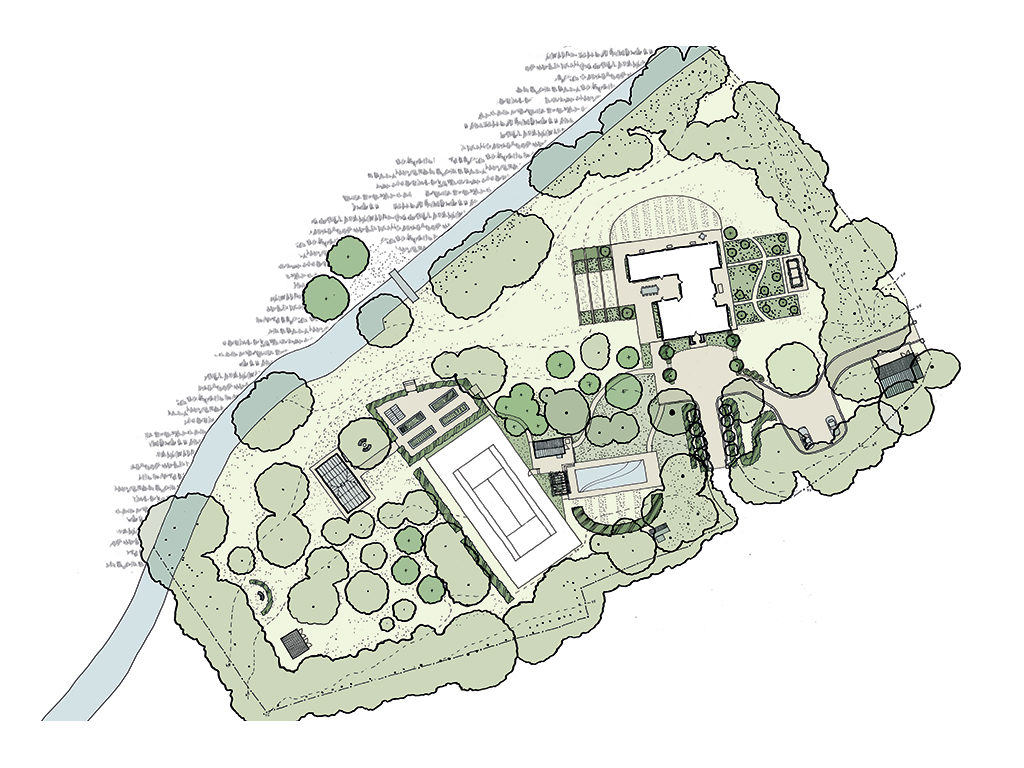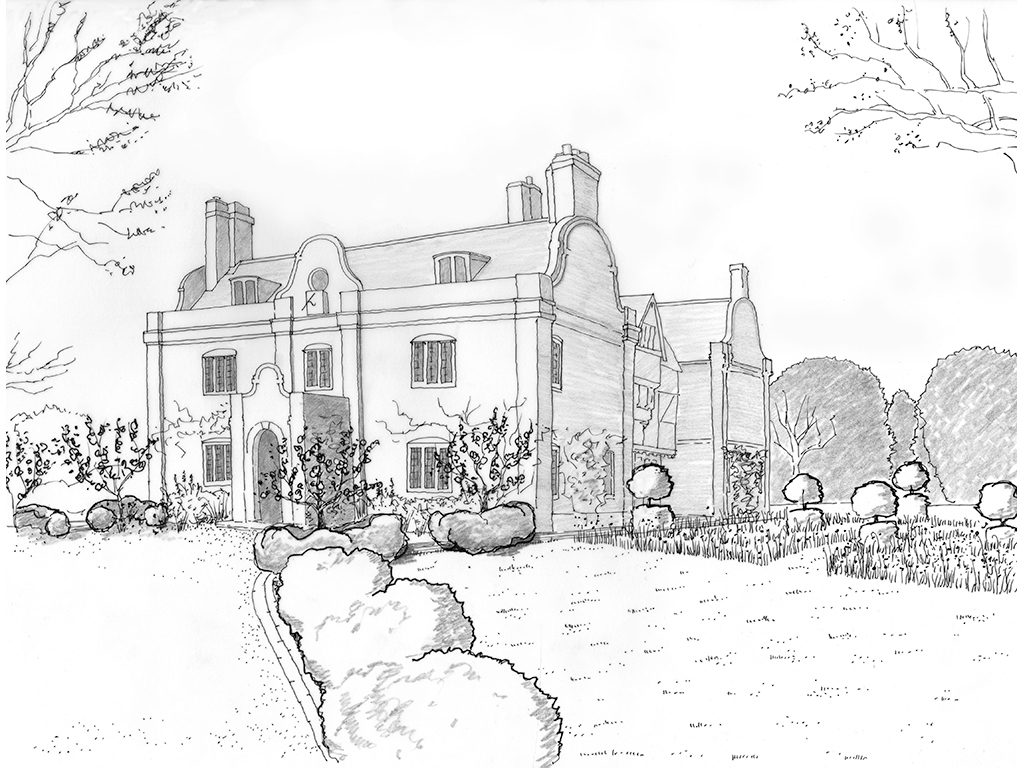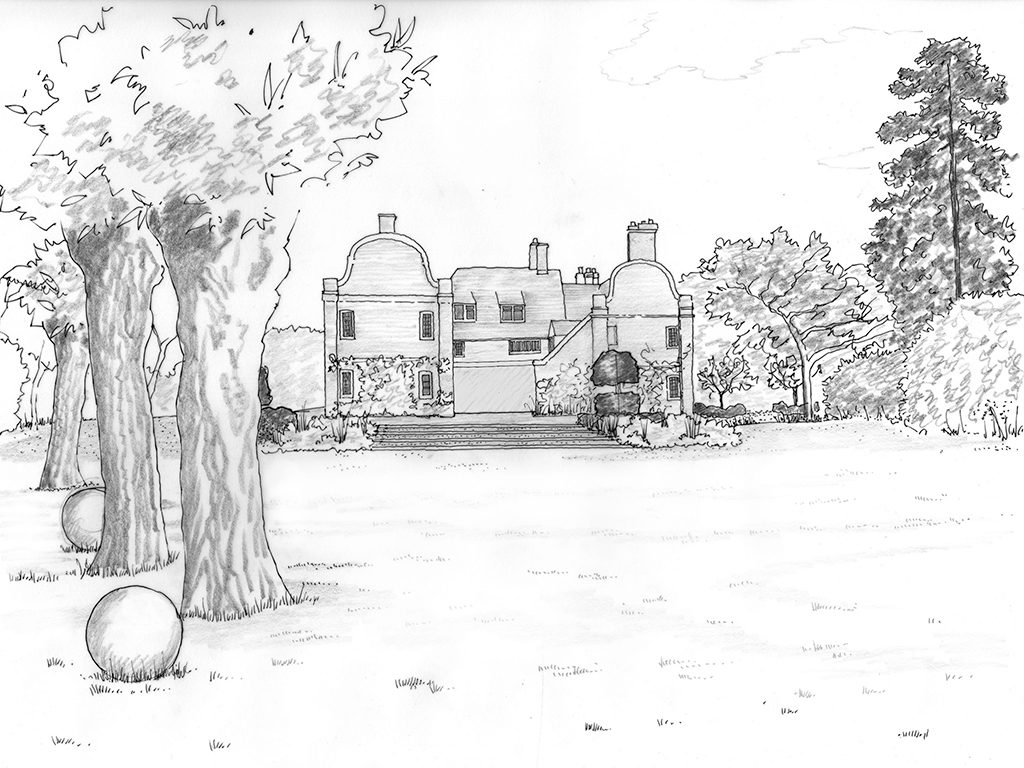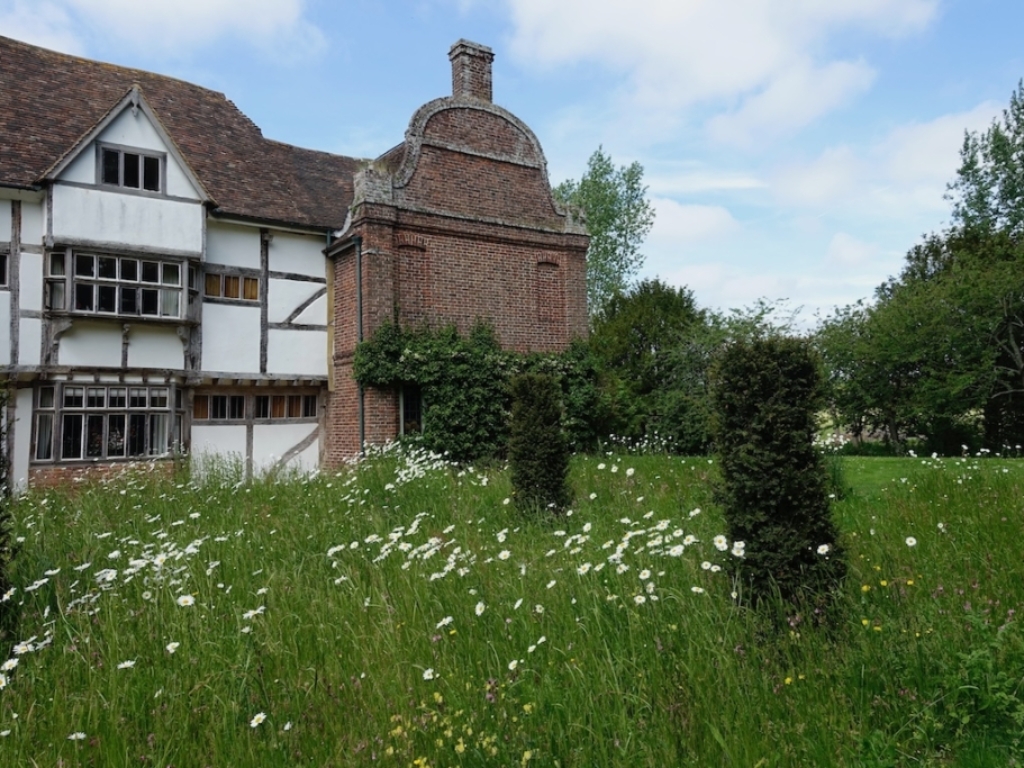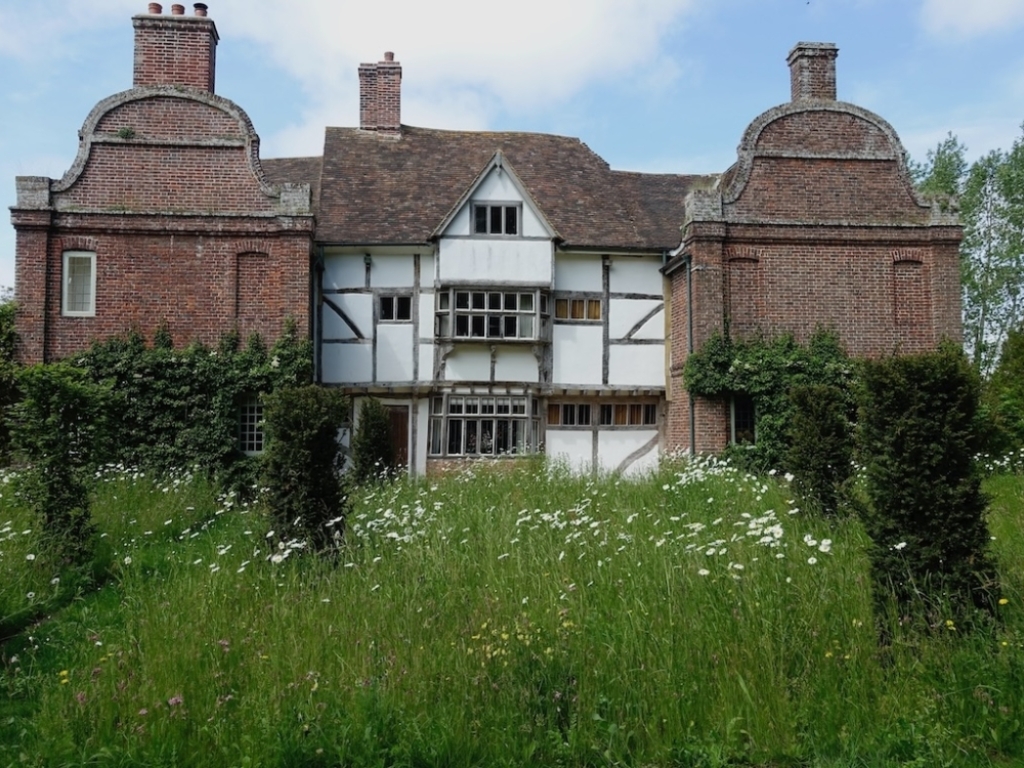DUTCH MANOR
A beautiful house in a hidden spot, the garden for this historically important once moated home to Dutch traders will provide a beautiful and sensitive setting. With careful placement to make the most of views and provide walks and vistas we have also sought to create a useful garden with pool, tennis court vegetable potager and orchard to be enjoyed by an active family.
A palette of natural stone, local brick and sustainable wood has been chosen to reference the local vernacular, reusing materials on site; reclaimed and local sources wherever possible.
The planting scheme has been developed to be sympathetic to the historic setting; topiary shapes echo the brick gables, and reference historic gardens of the eighteenth century, drawing on the unusual Dutch influence in this part of Kent at that time. The parterre will be planted with wildflowers to draw in butterflies and bees and overall increase the biodiversity of the site. The planting in the forecourt and the west terraces will provide a gentle grounding to the house with a palette inspired by the warm brickwork and shapes of the architecture, and the naturalised plant families of the area.
The gardens have been designed to evolve over time and provide a beautiful backdrop and playground for generations to come.
In collaboration with pba and Purcell.
Dutch Manor Plan
© Marian Boswall
Dutch Manor
© Marian Boswall
Dutch Manor
© Marian Boswall
Dutch Manor
© Marian Boswall
Dutch Manor
© Marian Boswall
A beautiful house in a hidden spot, the garden for this historically important once moated home to Dutch traders will provide a beautiful and sensitive setting. With careful placement to make the most of views and provide walks and vistas we have also sought to create a useful garden with pool, tennis court vegetable potager and orchard to be enjoyed by an active family.
A palette of natural stone, local brick and sustainable wood has been chosen to reference the local vernacular, reusing materials on site; reclaimed and local sources wherever possible.
The planting scheme has been developed to be sympathetic to the historic setting; topiary shapes echo the brick gables, and reference historic gardens of the eighteenth century, drawing on the unusual Dutch influence in this part of Kent at that time. The parterre will be planted with wildflowers to draw in butterflies and bees and overall increase the biodiversity of the site. The planting in the forecourt and the west terraces will provide a gentle grounding to the house with a palette inspired by the warm brickwork and shapes of the architecture, and the naturalised plant families of the area.
The gardens have been designed to evolve over time and provide a beautiful backdrop and playground for generations to come.
In collaboration with pba and Purcell.
